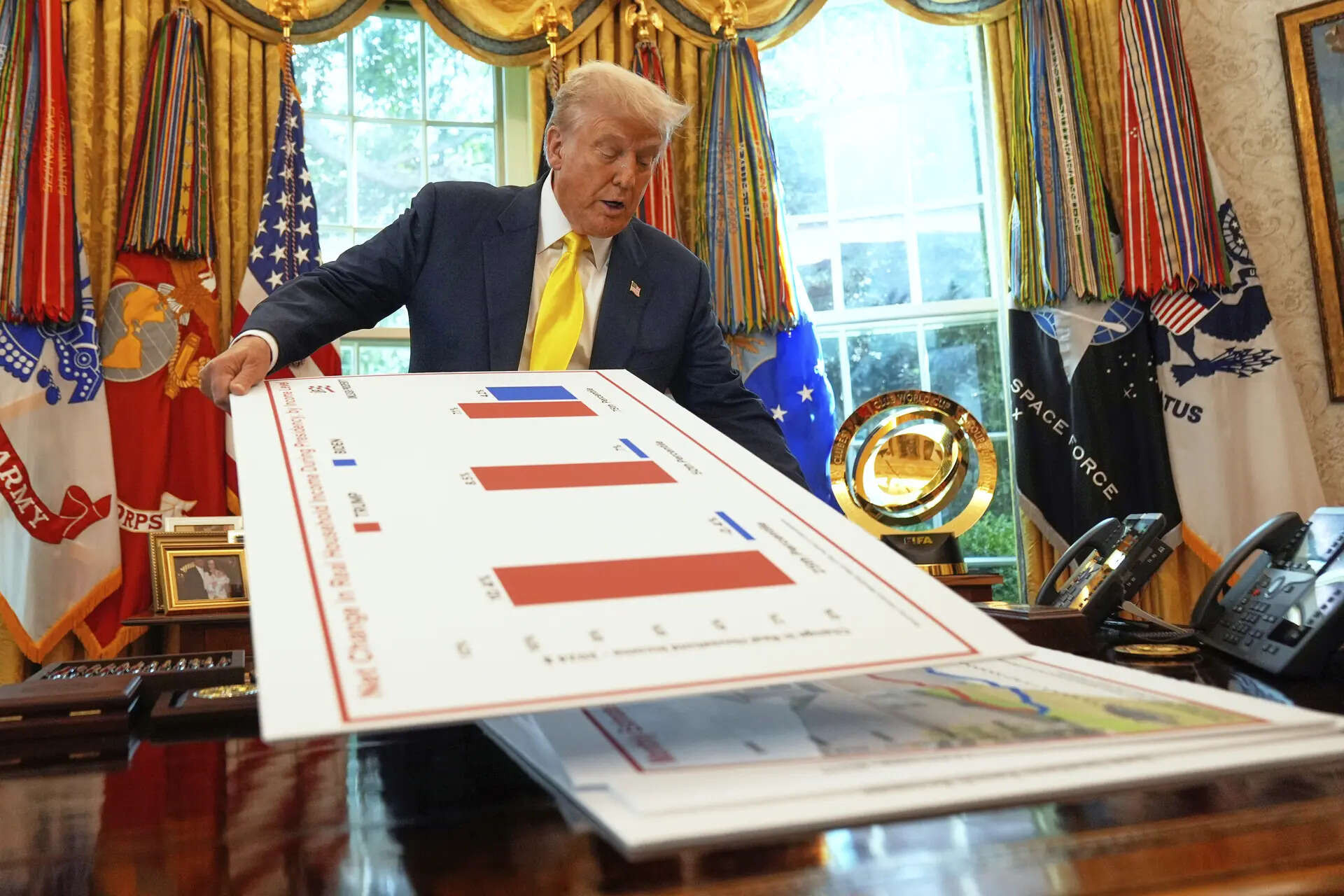The US economy rebounded strongly in the second quarter, growing at 3.3%, revised upwards from initial estimates. This surge followed a 0.5% contraction in the first quarter, largely attributed to President Trump’s tariffs disrupting trade flows. A sharp drop in imports significantly boosted GDP, offsetting weaker investment and exports, while corporate profits also saw a substantial increase.
The US Economy: Not Just Surviving, But Thriving?
For months, whispers of recession have haunted the American economic landscape. But the latest data paints a different picture – one of resilience, surprising strength, and a consumer who just keeps on spending. Forget gloomy predictions; the US economy isn’t just muddling through; it’s showing some serious pep in its step.
The second quarter GDP growth figures were recently revised upwards, landing at a robust 3.3%. This isn’t some marginal adjustment; it’s a significant bump from the initial estimate, and it signals a deeper trend than just a lucky few months. So, what’s driving this unexpected surge?
Consumers: The Unsung Heroes of Economic Growth
One of the biggest engines powering this growth is – you guessed it – the American consumer. Despite inflation lingering (though cooling), and interest rates remaining elevated, people are still opening their wallets and spending money. This unwavering consumer confidence is fueled by a surprisingly strong labor market. Job growth has remained consistent, and unemployment remains stubbornly low, providing a sense of security and willingness to spend. Think of it as the ultimate vote of confidence in the economy’s future.
Beyond just spending, where are these dollars going? Discretionary spending is up, suggesting that people aren’t just buying necessities; they’re indulging in experiences, travel, and goods that bring them joy. This shift indicates a broader sense of optimism, pushing beyond the anxieties that defined much of the past year. The strength of the American consumer is proving to be the bedrock for positive economic indicators.
Imports: A Smaller Role, A Bigger Impact
Another interesting factor contributing to the revised GDP figures is a decrease in imports. This might sound counterintuitive – wouldn’t more imports suggest a healthier demand? However, a decline in imports can actually boost GDP calculations. When fewer goods and services are brought in from overseas, domestic production gets a relative boost, contributing positively to the overall GDP figure.
This doesn’t necessarily signal a long-term trend of protectionism, but it does highlight the complex interplay of global trade and its impact on national economic indicators. It also underscores the importance of domestic industries in contributing to overall economic health.

Investment: Businesses Betting on the Future
While consumer spending is a key driver, businesses are also playing their part. Nonresidential fixed investment – which includes investments in structures, equipment, and intellectual property products – has been a significant contributor to the GDP growth. This suggests that businesses are confident enough in the future to make long-term investments, expanding operations, and developing new technologies.
This investment is not just about immediate returns; it’s about building for the future, innovating, and creating new opportunities. It signals a belief that the current economic strength is not just a flash in the pan, but a more sustainable trend. Read more about [business investment trends](internal-link-to-related-article).
Challenges Remain on the Horizon
Of course, it’s not all sunshine and rainbows. Inflation, while moderating, is still above the Federal Reserve’s target. Interest rates, while potentially nearing their peak, remain elevated, impacting borrowing costs for businesses and consumers alike. There are global uncertainties, geopolitical risks, and potential supply chain disruptions that could all throw a wrench in the works.
Furthermore, this revised GDP data only tells the story of the second quarter. The future remains uncertain. Continued vigilance and proactive policy-making will be crucial to maintaining this positive momentum. We also need to look closely at why consumers are spending and whether that is based on sustainable wage growth or simply running down savings.
What Does This Mean for the Future?
The revised GDP figures offer a welcome dose of optimism in a world filled with economic anxieties. The US economy, fueled by resilient consumer spending and strategic business investment, has shown that it’s capable of surprising even the most seasoned analysts. However, these positive indicators don’t negate the existing challenges. The path ahead requires navigating inflation, managing interest rates, and addressing global uncertainties. The latest numbers suggest the economy has more strength than many predicted, it is imperative to maintain vigilance to ensure that the economy can continue to deliver positive news in the quarters to come. The strength of the US economy is not something to take for granted.







